Before You Start Tying Riffling Hitch Tube Flies: A Handy Tool for the Job Before…
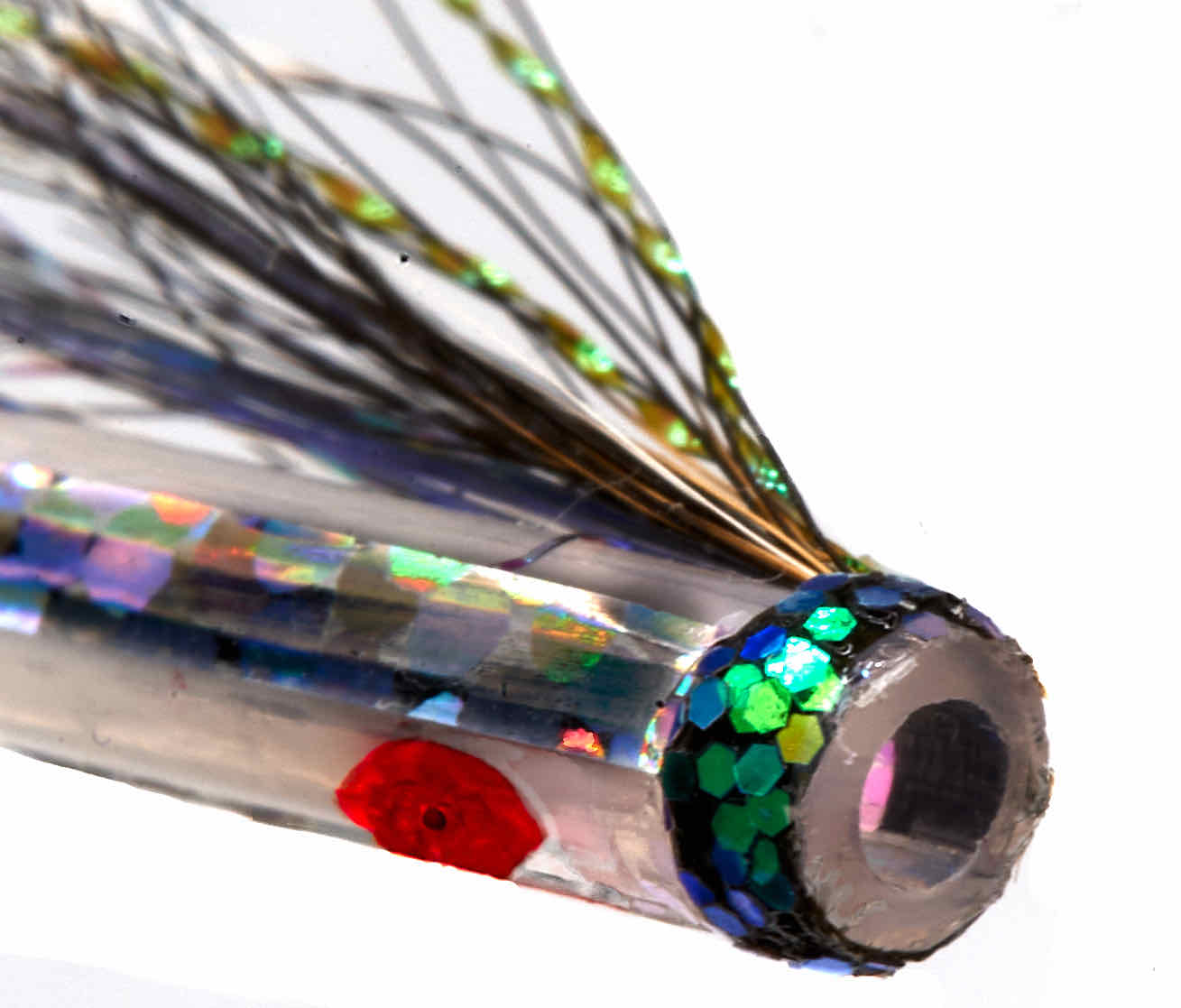
Thoughts on iridescent material in fishing
A substantial percentage of the food Atlantic salmon and steelhead eat at high seas is fish, often small silverfish like capelin and sand-eel, as seen in the photo below. These and many other baitfish and various sea worms have some form of iridescent colour structure in their colouration and iridescence as colour may very well play a part in the way prey and bait play hide and seek in the ocean –
In this highly advanced hide-and-seek game, we may assume that the predators have abilities and detecting skills to get them close to the prey. Glimpses of light shimmering on an iridescent surface could be a critical element that brings the predators closer to the baitfish they are looking for.
What do salmon eat at sea? Read more and see the great images of the food they eat in this article
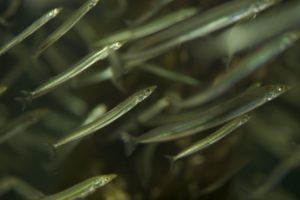
The proof is in the pudding.
Sand eel or sandlancer. A favoured meal for Atlantic salmon and steelhead. A fly like The Sunray shadow is a perfect representation of these gleaming and erratic fish
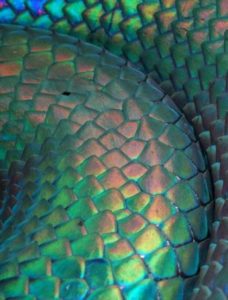
What is Iridescence?
Iridescent: Opalescent, shimmering, luminous, glittering, sparkling, dazzling, shining, gleaming, kaleidoscopic, rainbow-coloured – We have many words for this lovely-looking material that we find with animals on land and in water –
Iridescence (also known as goniochromism) is a luminous colour that seems to change when seen from different angles. It is often created by structural colouration.
A highly efficient riffling hitch fly with an iridescent head
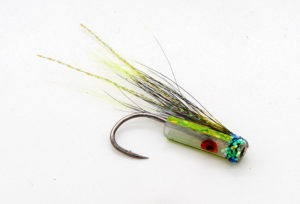
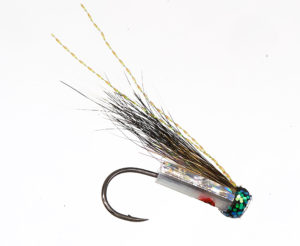
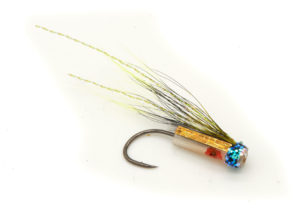
The recent season I have developed a series of riffling hitch flies where I have incorporated the iridescent properties in the form of iridescent pixel flakes attached to the head of the fly a method I also have used on sub-surface flies. The series of flies is called the Hitchman flies and is available through our fly store.
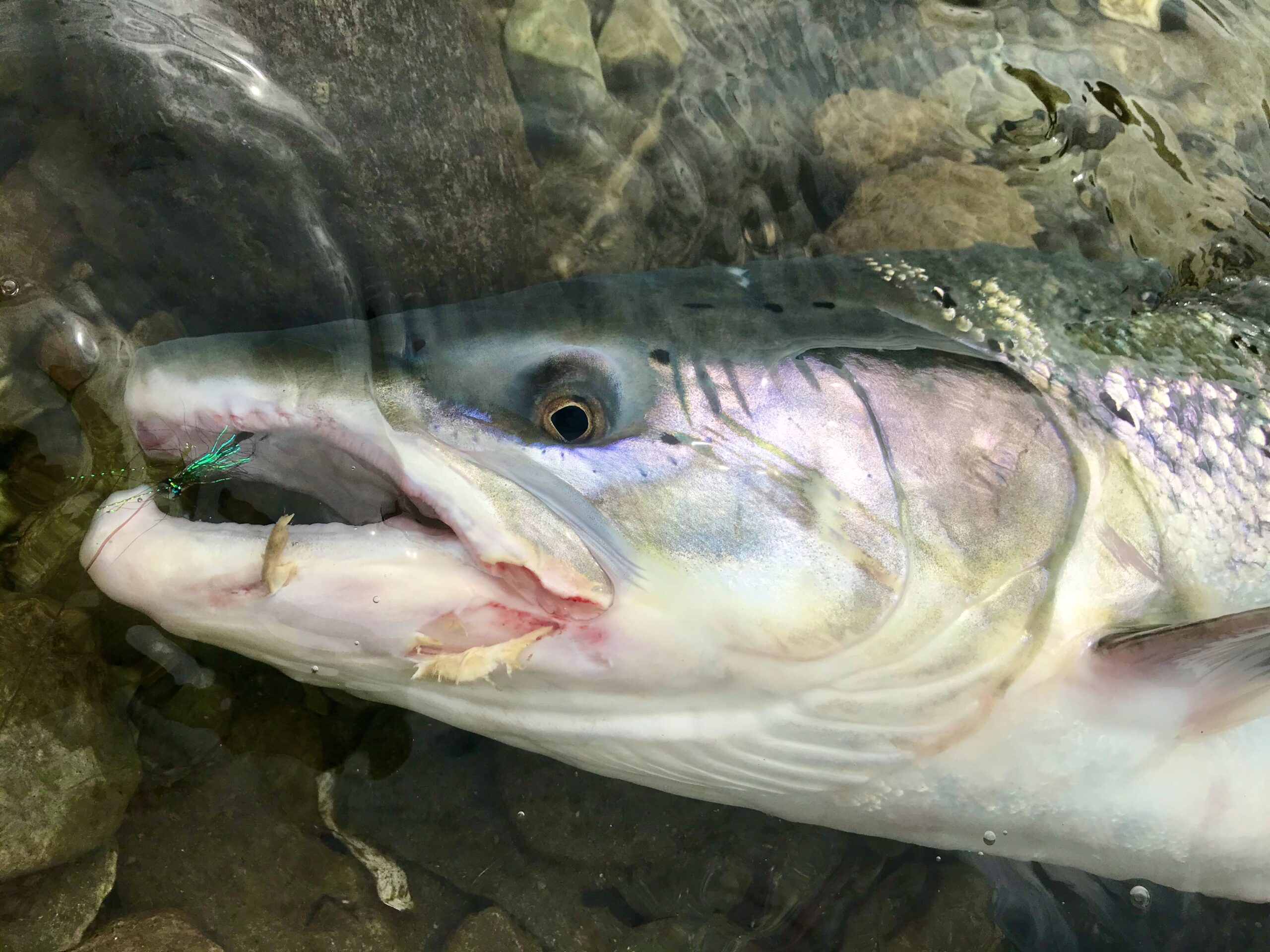
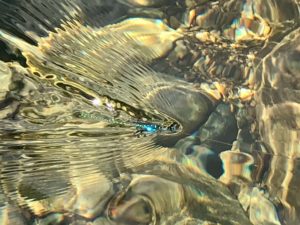
A tiny shimmering Green Hitchman fly – The perfect fly for Atlantic salmon in fast low water
Iridescent material on sea trout lureres for low water costal fishing
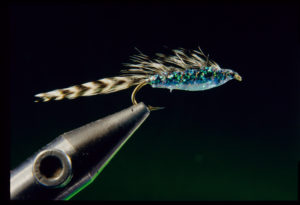
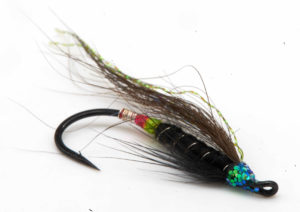
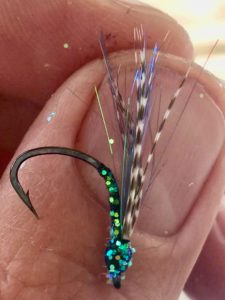
- A # 6 Zonker fly from the ’90s. Here I have mixed iridescent pixel flakes into the glue to create a somewhat see-through body (the underlying body on the zonker fly is a regular black wool thread.
- A # 12 undertaker – with the head covered in iridescent pixels – The choice of background (in this case, black tying thread) is part of the finished result when the iridescent pixels is added to the fly.
- I use a tiny, skinny sea trout fly (# 12) for finicky fish. The head + body is covered with fly-tying thread …then glued with superglue and sprinkled with iridescent pixel flakes.
Over the years I have used the properties of shimmering iridescent material on my coastal sea trout lures and flies and have never looked back sins then.
The green iridescent colouration is effective stuff when you’re targeting fish near the surface (0 – 3 meters down) in clear waters.
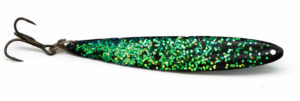

Here are two coastal sea trout lures (1/2 – 1 Oz.). I designed it back in the ’90s
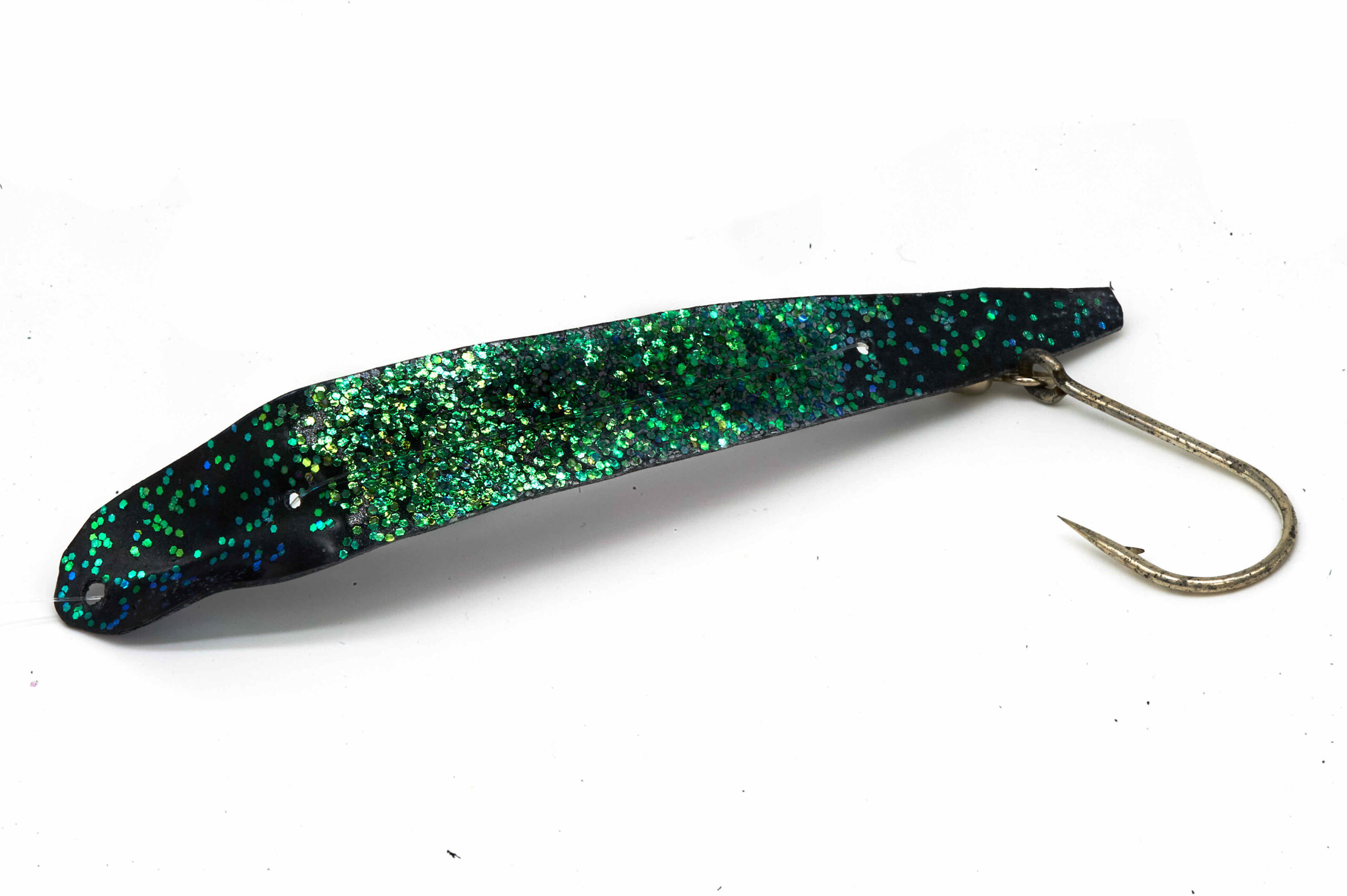
Iridescent pixel flakes also used on this homemade, highly efficient APEX lure from the ’90s
Iridescent material used on steelhead wake flies
We wanted to make our flies easier to find out on the rough water or in low light conditions and added foam with iridescent properties to the flies – little did we think that the iridescent material would increase the actual catch returns – but it did make the flies more attractive. Consequently, we incorporate the iridescent EVA foam in several fly patterns.
It may be a tiny glimpse of the green iridescent material that spurs the fish to make the tour to the surface…
Here is the Flashback Bug, a favoured Steelhead fly… If you like to try it, see it in our shop here
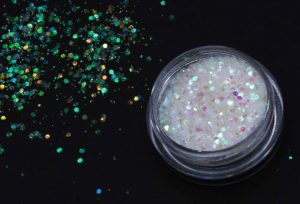
How to – with iridescent pixels
The pixels will act differently on various colour backgrounds; I have had the best result on a plain black background. I use super-glue as finishing varnish on the head of the flies and sprinkle the pixels into the still vet super-glue while I rotate the fly in the fly-tying vice
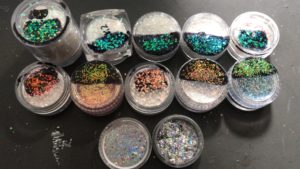
Many shades of iridescent
The iridescent pixels are made in many shades, and the result varies greatly when applied to a specific coloured background – See the different types of iridescent pixel flakes in our shop on rifflinghitch.com here.
In the image, you can see some of the many colourations of pixels when applied to a black background.
Danish story on iridescent material in fishing
If you read Danish (Scandinavian) below you will find an article I made in the ’90s about my initial experiments with iridescent material and low water fishing.

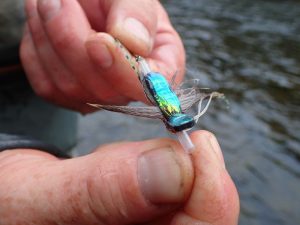
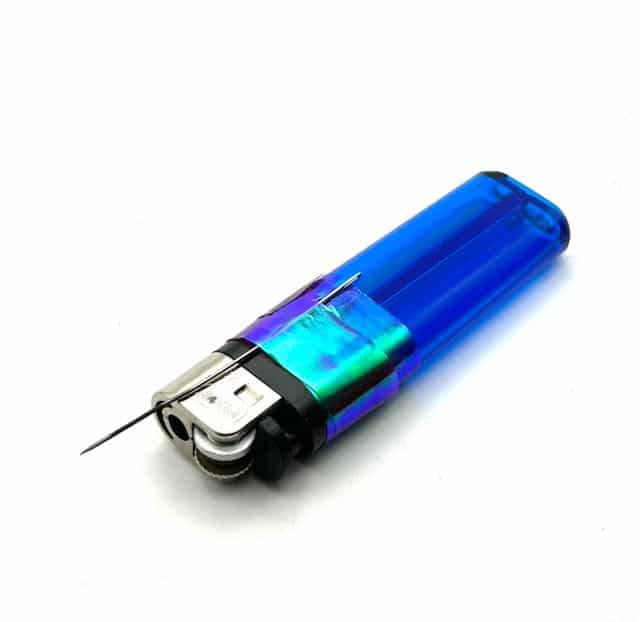

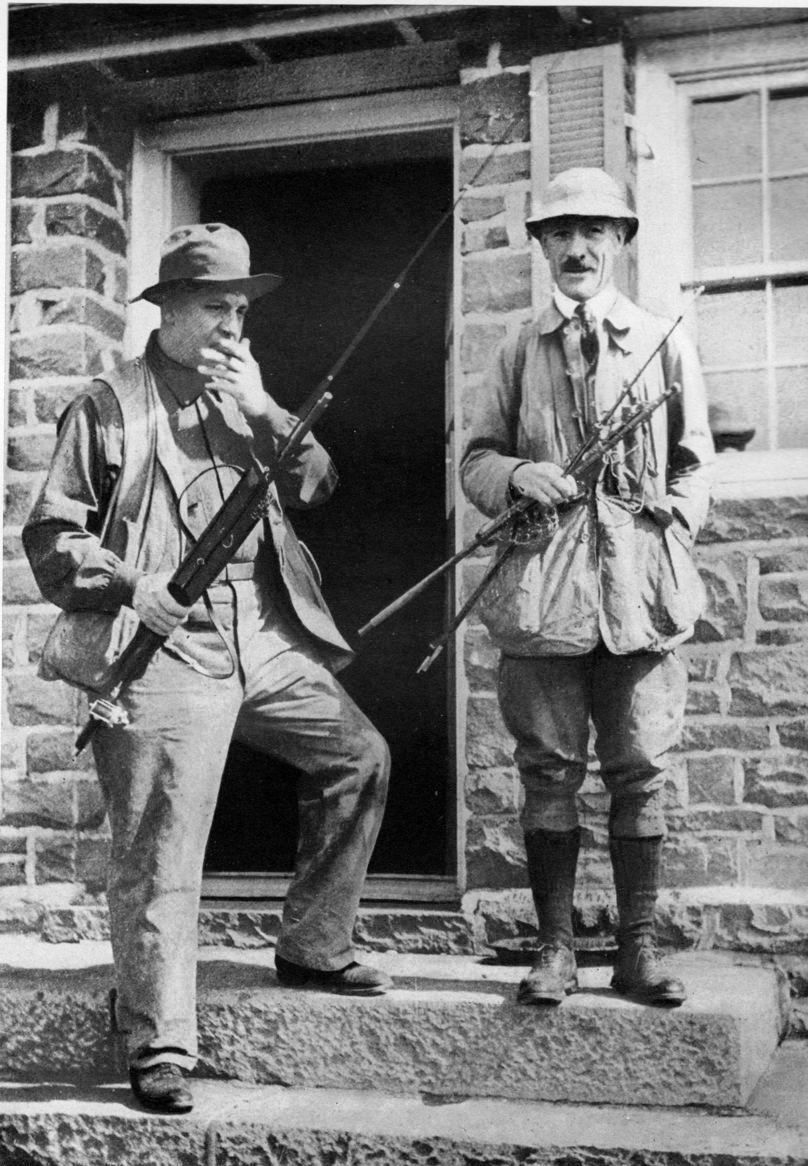
Comments (0)